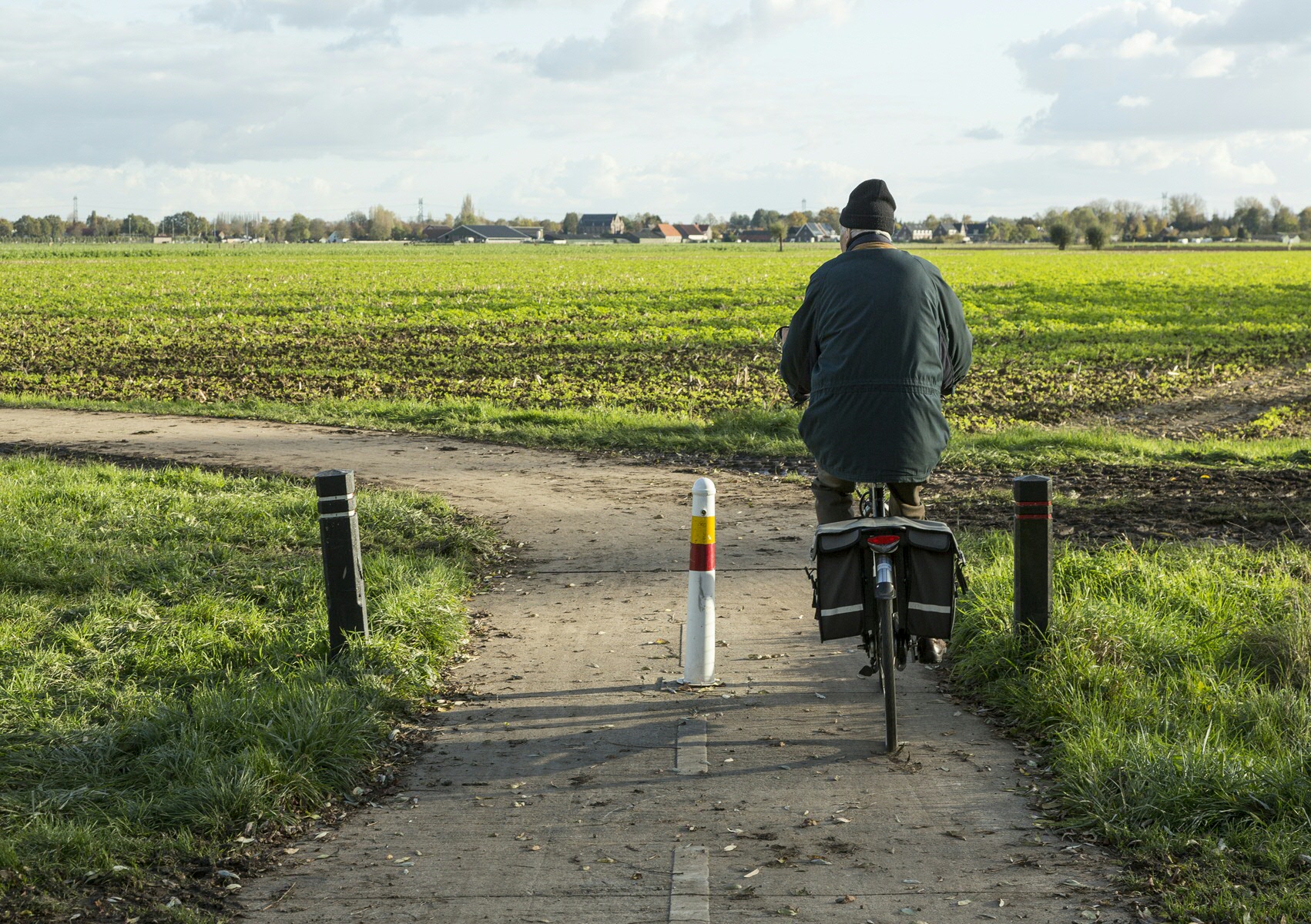Lonely, but not miserable
Our society is ageing rapidly, and there is a growing concern about loneliness among older people. It’s a sensitive subject, however − and we still haven’t found the best way to tackle the problem.
Text Merel Weijer, Communicatie RUG/ Photo's Marjon Plegt, Bert Spiertz
‘Nobody is lonely here’
You can look for them, but you won’t find them,’ and ‘nobody is lonely here.’ These things were said at a meeting on loneliness among seniors in Garmerwolde. They clearly show that being lonely is a subject we prefer to avoid. But research shows that 10 per cent of the villagers are in fact lonely.
The study conducted in Garmerwolde was initiated by Marleen Oostland of the foundation Jij&co in collaboration with Karin Veldman of the Science Shop Medicine & Public Health. Oostland's idea was to reduce loneliness in small villages by bringing two categories of people together, seniors who had active pursuits and seniors who didn’t. She wanted to commission a study on loneliness and Karin approached a number of students of Spatial Sciences. Felipe Melo Pissardo, Stijn Ringnalda and Gijs Westra went to work on this assignment. They were coached by Louise Meijering.

What is loneliness?
The first question was: when exactly does loneliness become a problem, and how do you solve it? Gijs says: ‘when we started out, we first wanted to know what makes a person a lonely senior. We went from door to door and handed out a questionnaire to the older villagers. It asked about contacts with friends, relatives and people in the neighbourhood, social activities and their importance. The answers showed that people feel lonelier the more they have an introvert personality and live an isolated life, with few social contacts. The next question was: can we reduce the loneliness of older people by connecting them with seniors who lead an active life?’ We soon found out that the solution was not that simple.
No standard remedy
Loneliness is complicated, and it isn’t the same for everyone. You can’t deal with it by applying a standard remedy like arranging more social contact between active and inactive seniors. For instance, one of the people who responded to the survey was a man with a hobby that can only be pursued in the summer. During the rest of the year, he spent a lot of time at home. He didn’t feel much of a connection with other villagers. Occasionally, he would participate in village activities, but what he really wanted was to find someone with the same personality and interests.
Another man only had contact with a couple of relatives. You might assume he was lonely, but that’s not how he felt. He satisfied his need for social contact by talking to people he met out of doors. ‘I like to go out on my bike. You meet people, you see people going about their activities in the countryside, and as you’re cycling, you come across dogs and cats.’

Something has to ‘click’
The stereotype of an older person sitting idly at home and waiting to die is often misleading. In some cases, loneliness is simply unavoidable. If a person in old age loses their social network because the people around them are passing away, they may no longer feel the need to develop a whole new network. And anyway, making social contact is not something you can do at will. According to Karin Veldman, ‘you can put people together in a room and give them a pot of coffee, but that will not take away their feeling of loneliness.’ For that to happen, something needs to click between them. In fact, if you put active and inactive people together, you are introducing inequality, so there is not much chance of anything clicking.
Meaningful relationships
This soon led the researchers to drop the idea of connecting active and inactive people. Now the question was how older people can reshape their loneliness. After a while, the students came up with the concept of meaningful relationships. Relationships with people or animals or even the landscape. The important thing is to have a bond. Gijs says: ‘we got rather sceptical responses when we presented the results of our survey and study. Apparently, it’s hard to admit that people are lonely. It became very clear that there is a negative stigma attached to loneliness. It is not accepted. In fact, its existence is denied. People believe that to be lonely is to be miserable and pitiful. But the fact is that loneliness is part and parcel of growing old. It can happen to anyone.’
Not pitiful
Two important conclusions of the study stand out. If someone is lonely, the first step is to have a conversation with them. It has to be a conversation between equals, without one of the participants being labelled as lonely. Paying due attention to personalities and shared interests, you can start to foster meaningful relationships and tackle loneliness to good effect. The other thing the study shows is that it’s important to remove the ugly stigma attached to loneliness. Perhaps people don’t dare to admit they are lonely because the people around them refuse to accept the reality of loneliness. By bringing it into the open, you can start to destroy the taboo. Loneliness can’t always be avoided, and it’s not always bad. Lonely people are not always miserable or pitiful.
More news
-
01 December 2025
The power of movement
-
24 November 2025
RUG en Ministerie van I&W starten brede meerjarige samenwerking
